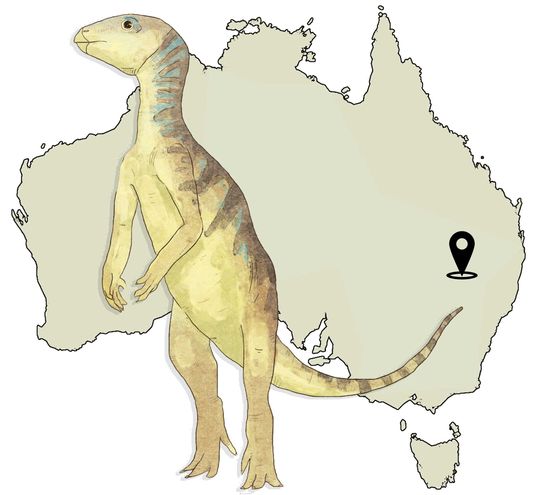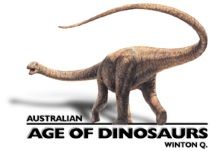Weewarrasaurus pobeni
Pronunciation
We-warr-a-sore-us po-ben-ee
Meaning
[Mike] Poben's Wee Warra lizard
Period
Early Cretaceous (113–100 Mya)
Discovery and publication
Opal buyer Mike Poben discovered small jaw fragments of Weewarrasaurus pobeni in August 2013 in bags of rough opal he purchased from a miner in Lightning Ridge, New South Wales. It was named by University of New England palaeontologist Dr Phil Bell and colleagues in December 2018. The specimen is held at the Australian Opal Centre, Lightning Ridge.
Locality
The holotype comes from an underground mine at the Wee Warra locality close to the Grawin/Glengarry opal fields (approximately 40km southwest of Lightning Ridge) in central-northern New South Wales.
Description
W. pobeni was a small, herbivorous dinosaur that probably travelled in family groups or herds for protection. This small dinosaur was described from two jaw fragments and through comparison with other, similar species.
W. pobeni existed in a period of simultaneous branches of Gondwanan iguanodont ornithopods, including Anabisetia, Gasparinisaura, Macrogryphosaurus, and Trinisaura. The new taxa Weewarrasaurus supports the idea that localities in Australia abounded with small-bodied basal ornithopods during the Early to Mid-Cretaceous Era. While future discoveries and interpretations may prove otherwise it is possible that Lightning Ridge occupied a kind of meeting point between northern sauropod-dominated faunas and the ornithopod-dominated faunas in the south. Only time and more research will tell.
